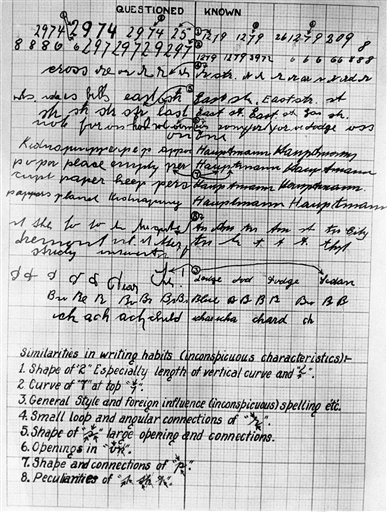February 13, 1935. Bruno Hauptmann, an ex-convict from Germany, is sentenced to death by electric chair for the abduction and murder of famed aviator Charles Lindbergh’s 20-month-old son.
One interesting aspect of the kidnapping, from the vantage of today’s highly interconnected, socially porous world, is how few means people had, back then, for transmitting anonymous messages or conducting masked peer-to-peer communication. In the Lindbergh case, the kidnappers made their demands known via letters delivered by the USPS. While the Lindberghs went on NBC to plead for the safe return of their child, and then handled subsequent ransom negotiations by leaving messages in the ads pages of New York newspapers. (It’s a wonder, really, that any felonies not involving a tommy gun and a colorful personality were committed before the 21st century.)
Now, spend four minutes plotting a pilot episode for CSI: Brooklyn, in which the toddler child of a hip-hop power couple is abducted. Imagine the myriad ways, now, a kidnapper could communicate with the parents of the abductee under a disguised identity — texts from a burner cell phone, a drop-box email exchange (a la Petraeus and Broadwell), maybe even a Skype chat using a false IP — and it becomes clear that modern information technology didn’t just deprive newspapers of classifieds income, it also robbed them of noirish intrigue.

A comparison, prepared by the prosecution’s handwriting expert, of Bruno Richard Hauptmann’s writing with writing from the ransom notes.

